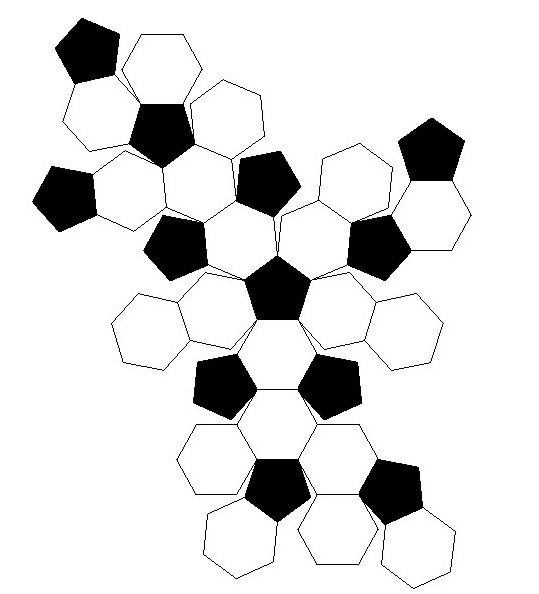One of the most popular areas in origami is 3D modeling. The creation of three-dimensional figures captures the attention of not only children, but also adults. If you have already mastered the simplest schemes and techniques and learned to make at least a cube out of paper, you can move on to more complex models. It is best to practice creating the so-called "Platonic solids." There are only five of them: a tetrahedron, an icosahedron, a hexahedron, a dodecahedron and an octahedron. All figures are
regular polyhedrons, which are based on the simplest
geometric figures. Today you will learn how to make an icosahedron out of paper.
List of materials and tools
- One sheet of thin color cardboard (preferred density is 220 g / m 2 ).
- Sharp scissors or clerical knife.
- A simple pencil with hardness HB.
- Long wooden ruler (at least 20 cm).
- Eraser.
- PVA glue or pencil.
- Brush.
Instruction manual
- Since it is impossible to make an icosahedron from paper without a sweep, it needs to be found and printed on a sheet or drawn manually. The pattern consists of 20 equilateral triangles connected in a special sequence. On the free edges it is necessary to provide small indents for gluing.
- You can start cutting. If you are using a knife, be sure to work on a rubber mat for prototyping, so as not to damage the wooden surface of the table.
- If you want to avoid ugly kinks during assembly, you need to walk along a bend line with a sharp object. This will make the edges sharper and more even.
- Proceed with the assembly. Apply an even layer of glue to the allowances and begin to shape. Since making an icosahedron out of paper alone is very difficult, it is best to ask a friend for help. So that the edges do not part, they must be held together and glued together with other parts. The model will get the final hardness at the very end of the assembly. Gluing the last two faces is the hardest. Their allowances should converge inside the figure, and with strong pressure the shape can lose elasticity. In order not to spoil the appearance of the icosahedron, you need to glue the last sides without bending the edges to the end, and then gently push them in.

If you have fully figured out how to make an icosahedron out of paper, you can practice assembling a more complex model - a truncated icosahedron. This figure consists of 32 faces: 12 equilateral pentagons and 20
regular hexagons. In the finished form and with the right coloring, it is very similar to a
soccer ball made of paper. The assembly principle is similar, the differences are only in the template. The development of a truncated icosahedron is very difficult to build, so it is best to print it on a printer. The paper should be chosen very thick, otherwise the figure will not hold its shape, and deflections may occur in places of pressure.
Origami and 3D modeling is a great way to pass a friendly or family evening. Such activities create a good intellectual background and help to develop spatial imagination.